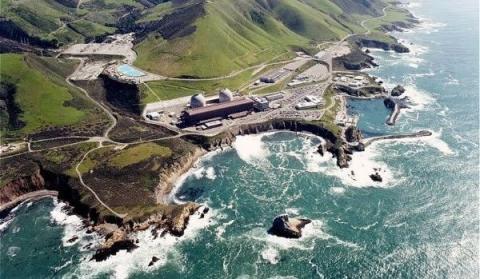The Diablo Canyon Nuclear Power Plant planned to undergo a seismic survey for 3D imaging of nearby fault lines. Pacific Gas and Electric (PG&E), owners of the plant, met with the California Coastal Commission on November 14 and the survey proposal was rejected. The high energy seismic tests required approval, but risk to the environment and wildlife were paramount in the decision.
The component of seismic testing that was rejected involved high energy sound waves of 140 to 180 decibels. Waves would be emitted from a vessel towards the earth off the coast of Avila Beach, a few miles from the site. Acoustic receivers near the vessel would pick up feedback and surveyors could produce 3D models of regional faults. This could provide better risk evaluation for the Diablo Canyon.
However, the seismic survey's safety measures for the environment and wildlife were not sufficient enough for the Coastal Commission. The decision to deny the survey was unanimous.
Michael Jasny of the Natural Resources Defense Council noted that marine life depends on sound more than sight. The seismic survey was to be solely based on sound waves through the water. Jasny stated:
"It is sound that marine mammals and many species of fish use to communicate, to mate, to find food, to do many things that they need to do in the wild. It is difficult to imagine a worse location environmentally than this particular area."
The Commission's official conclusion of the Diablo Canyon seismic survey at the hearing:
"The Commission hereby denies the Coastal Development Permit for the proposed project and adopts the findings set forth below on grounds that there is insufficient evidence in the record to determine whether the development will be in conformity with the policies of Chapter 3 of the Coastal Act."
Commissioner Steven Kinsey stated that approval of the proposed seismic survey would set a dangerous precedent for future off shore surveys. He claimed, “It’s not a difficult decision to make today that we do not want to be opening the coast to this kind of activity.” Commissioner Martha McClure has already stated opposition to the entire plant operation. She says no measure can be taken to ensure the safety of Diablo Canyon:
“The studies were an attempt to push the can down the road. I don’t buy the public safety issue at all. I want to see PG&E turn the corner and spend the $64 million on solar power.”
PG&E Spokesman Blair Jones released this statement following the Coastal Commission's decision:
"As part of our strong commitment to seismic safety, PG&E continually studies earthquake faults in the region of Diablo Canyon and seismic events around the world to ensure the safety of the facility.The proposed survey is only one component of our larger, multi-layered seismic research program through which we recently completed several advanced onshore and offshore studies to further our knowledge of the region’s complex geology. We will focus on gathering and interpreting this recently collected data as we evaluate the Commission’s decision to determine how to proceed with additional seismic data collection efforts."
The decision pleased the many environmental and wildlife activists who were in attendance at the hearing. These activists share a similar sentiment as Commissioner McClure and want nuclear energy operations stopped altogether. PG&E is obligated to report on the potential seismic activity of its region. It must do so in order to renew its operating permit beyond 2025.
